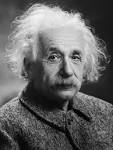| Date | Text | |
|---|---|---|
30 Nov 1915

Barnard's Star |
Barnard's Star (astronomy) Barnard's Star is discovered by Edward Emerson Barnard. |
|
30 Nov 1915

Harlow Shapley |
Harlow Shapley (astronomy) Harlow Shapley found that the spectrum of S Sagittae and other Cepheids varied with brightness, recording it as spectral type F0 leading to maximum, F4 at maximum, and G3 just before minimum brightness. |
|
30 Nov 1915

Gilbert N. Lewis |
Gilbert N. Lewis (chemistry) Gilbert N. Lewis and Irving Langmuir formulate an electron shell model of chemical bonding. |
|
30 Nov 1915

Sydney Chapman |
Sydney Chapman (chemistry) Sydney Chapman and David Enskog systematically develop a kinetic theory of gases. |
|
30 Nov 1915

Jan Czochralski |
Jan Czochralski (chemistry) Jan Czochralski invents a method for growing single crystals of metals. |
|
30 Nov 1915

Ludwig Bieberbach |
Ludwig Bieberbach (mathematics) Ludwig Bieberbach presents the Bieberbach conjecture. |
|
30 Nov 1915

Wacław Sierpiński |
Wacław Sierpiński (mathematics) Wacław Sierpiński gives the first example of an absolutely normal number and describes the Sierpinski carpet. |
|
30 Nov 1915

Georges Guillain |
Georges Guillain (medicine) Georges Guillain, Jean Alexandre Barré and André Strohl diagnose two soldiers with Guillain-Barré syndrome of the peripheral nervous system and describe the key diagnostic abnormality of increased spinal fluid protein production, but normal cell count. |
|
30 Nov 1915

Eugen Bleuler |
Eugen Bleuler (medicine) Eugen Bleuler publishes his Lehrbuch der Psychiatrie, including a definition of complexes arising from diffuse brain damage, known as "Bleuler's psycho syndrome". |
|
30 Nov 1915

Albert Einstein |
Albert Einstein (physics) Albert Einstein publishes "Die Grundlage der allgemeinen Relativitätstheorie" on general relativity in Annalen der Physik 49 and shows that the field equations of general relativity admit wavelike solutions. |
|
30 Nov 1915

Karl Schwarzschild |
Karl Schwarzschild (physics) Karl Schwarzschild solves the Einstein vacuum field equations for uncharged spherically-symmetric non-rotating systems. |
|
30 Nov 1915

Lewis M. Terman |
Lewis M. Terman (psychology) Lewis M. Terman of Stanford University develops the first of the Stanford–Binet Intelligence Scales for intelligence testing. |